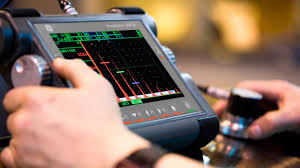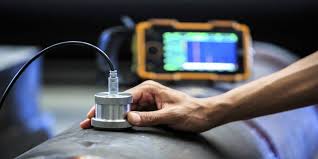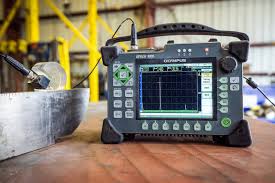Non Destructive Testing of Steel Structures in Egypt: Ensuring Safety and Quality
Non-destructive testing of steel structures in Egypt is essential for ensuring the safety and quality of buildings and infrastructure. With the increasing development and construction activities in Egypt, the need for reliable non-destructive testing techniques is crucial in order to detect any potential defects or weaknesses in inspection and testing of welds steel structures. This article will explore the importance of non-destructive testing of steel structures in Egypt and how it plays a critical role in ensuring the safety and durability of the country's infrastructure.
Non Destructive Testing (NDT) of steel structures in Egypt is a critical process that ensures the safety and quality of these important assets. This inspection method is used to detect any defects or irregularities in the structure without causing any damage to the material being tested. NDT is essential for identifying potential weaknesses or flaws in steel structures, such as bridges, buildings, and industrial facilities, in order to prevent catastrophic failures and ensure the safety of the public and workers. The NDT of steel structures in Egypt is conducted by certified inspectors and technicians who use various techniques such as visual inspection, ultrasonic testing, magnetic particle testing, radiographic testing, and eddy current testing. These methods allow for the examination of different aspects of the steel structure, including welds, material thickness, surface cracks, and internal flaws, to ensure that they meet the required safety and quality standards. In Egypt, NDT is regulated and overseen by organizations such as the Egyptian Organization for Standardization and Quality (EOS) and the Egyptian Authority for ndt laboratory Standardization and Quality (EASQ), which ensure that inspection procedures comply with international standards and best practices. Additionally, the use of advanced technology and equipment in NDT ensures accurate and reliable results, allowing for the early detection of potential issues and the implementation of timely maintenance and repair measures. By conducting NDT of steel structures in Egypt, companies and authorities can minimize the risk of accidents, extend the service life of assets, and maintain the overall integrity and performance of these vital structures. This not only ensures the safety of the public and workers but also contributes to the efficient operation and sustainability of Egypt's infrastructure and industrial facilities.
The Importance of Non Destructive Testing in Steel Structures

Non-destructive testing (NDT) is crucial for ensuring the safety and integrity of steel structures. It involves conducting tests without causing any damage to the material being examined. In the case of steel structures, NDT is vital for detecting any defects, cracks, or weakness that could potentially lead to catastrophic failure. NDT methods such as ultrasonic testing, magnetic particle testing, radiography, and visual inspection are commonly used to assess the quality and reliability of steel components. By identifying flaws early on, NDT helps prevent accidents, reduces maintenance costs, and extends the service life of steel structures. Additionally, it is often a radiographic inspection of welds requirement for regulatory compliance and certification in various industries. Overall, the importance of non-destructive testing in steel structures cannot be overstated, as it plays a critical role in ensuring the safety and functionality of these vital infrastructures.
Advancements in Non Destructive Testing Techniques for Steel Structures

Non-destructive testing (NDT) techniques have advanced significantly in recent years, particularly in the inspection of steel structures. These developments have allowed for more accurate and efficient assessments of the integrity and safety of steel infrastructure. One major advancement in NDT for steel structures is the use of advanced imaging technologies, such as digital radiography and computed tomography. These techniques provide highly detailed images of the internal structure of steel components, allowing for the detection of hidden defects and irregularities. Additionally, the use of electromagnetic and ultrasonic testing methods has become more widespread in the inspection of steel structures. These techniques can detect flaws and weaknesses in steel components without the need for destructive testing, providing valuable insights into the structural health of steel infrastructure. Furthermore, advancements in robotics and automation have led to the development of NDT techniques that can be performed remotely and in hard-to-reach areas of steel structures. This has improved the safety and efficiency of inspections, particularly in large and complex steel installations. Overall, advancements in NDT techniques for steel structures have led to more reliable and accurate assessments of the condition of steel infrastructure, ultimately contributing to the safety and longevity of these important assets.
Non Destructive Testing: Ensuring the Integrity of Steel Structures in Egypt

Non Destructive Testing (NDT) is an essential practice in Egypt for ensuring the integrity and safety of steel structures. This technique allows for the evaluation of the material properties and integrity of steel components without causing damage to the structure itself. NDT methods commonly used in Egypt include ultrasonic testing, radiographic testing, magnetic particle testing, and liquid penetrant testing. These methods help to detect flaws such as cracks, welding defects, and corrosion, ensuring that steel structures meet required safety standards. NDT plays a crucial role in maintaining the safety and reliability of steel structures in Egypt, particularly in sectors such as construction, oil and gas, and infrastructure development.
The Role of Non Destructive Testing in Maintaining Steel Structures in Egypt
inspection and testing of welds
Non-destructive testing (NDT) plays a crucial role in maintaining steel structures in Egypt by ensuring the safety and integrity of these assets. NDT techniques such as magnetic particle testing, ultrasonic testing, and radiographic testing are commonly used to detect defects and discontinuities in steel structures without causing damage to the materials. In an environment where corrosion is a major concern due to Egypt's proximity to the sea and harsh weather conditions, NDT helps identify potential areas of weakness in steel structures before they become safety hazards. By conducting regular NDT inspections, engineers and maintenance personnel can proactively address any issues and prevent structural failures. Furthermore, NDT is essential for compliance with local and international safety standards and regulations governing steel structures. Regular NDT inspections help ensure that these structures meet the required safety and quality specifications. Overall, NDT is instrumental in maintaining the structural integrity of steel assets in Egypt, contributing to the safety and longevity of these critical infrastructure components.
Non Destructive Testing Methods for Steel Structures in Egypt
Non Destructive Testing (NDT) methods for steel structures in Egypt include a range of techniques such as ultrasonic testing, magnetic particle testing, dye penetrant testing, radiographic testing, and visual testing. These methods are used to assess the integrity and quality of steel structures without causing any damage. NDT is essential for ensuring the safety and reliability of steel structures in various industries including construction, manufacturing, and infrastructure development in Egypt. It helps in identifying any defects or flaws in the material that could compromise the structural integrity and safety of the steel structures. Additionally, NDT methods comply with international standards and regulations to maintain the quality and durability of steel structures in Egypt.
The Evolution of Non Destructive Testing in Egyptian Steel Construction
The Evolution of Non Destructive Testing in Egyptian Steel Construction is a topic that delves into the advancements and adoption of non destructive testing techniques in the steel construction industry in Egypt. This study involves the historical development of non destructive testing methods in the context of steel construction, as well as the current state of these techniques in the Egyptian construction sector. It may encompass a thorough analysis of the impact of non destructive testing on the quality, safety, and reliability of steel structures in Egypt, as well as the challenges and opportunities associated with the integration of these technologies in the industry. Additionally, the research may also explore the future trends and potential innovations in non destructive testing within the Egyptian steel construction sector.
Challenges and Innovations in Non Destructive Testing of Steel Structures in Egypt
Challenges in non-destructive testing of steel structures in Egypt include the lack of standardized procedures and regulations, limited availability of advanced NDT techniques, and the need for proper training and certification of NDT personnel. Additionally, the harsh environmental conditions and high levels of pollution in some areas can affect the accuracy of NDT results. Innovations in NDT of steel structures in Egypt include the development of automated inspection systems, such as robotic crawlers and drones, to access and inspect hard-to-reach areas. There is also a growing use of advanced techniques such as phased array ultrasonics and laser scanning for more accurate and efficient inspections. Collaborative research and development efforts between industry, academic institutions, and government agencies are also driving innovation in this field.
تعليقات
إرسال تعليق